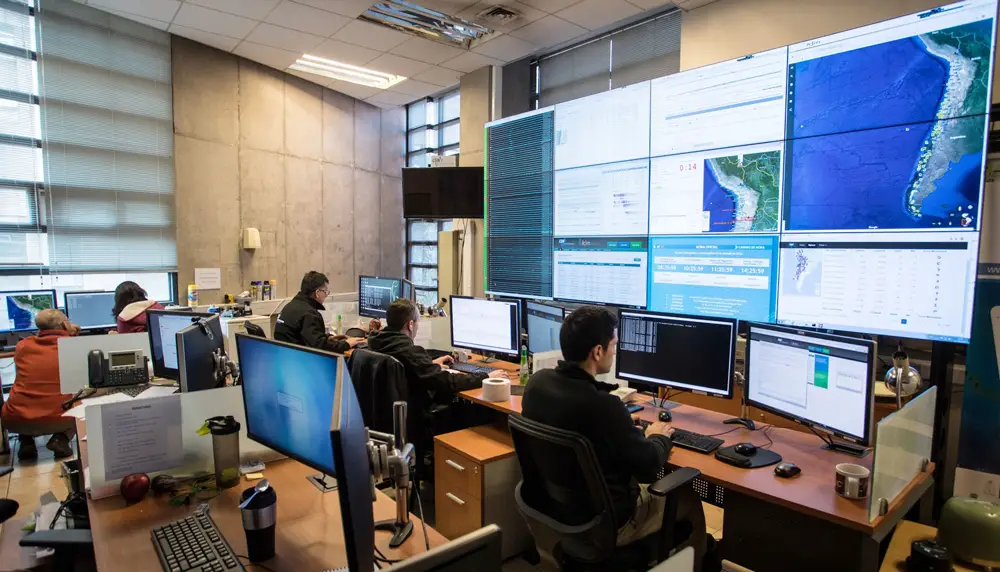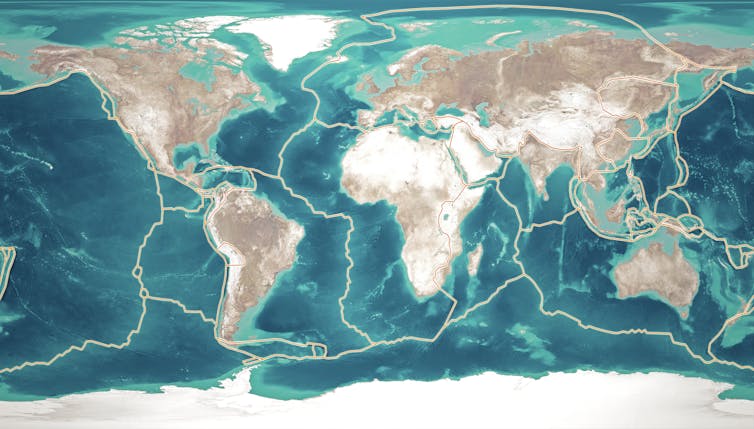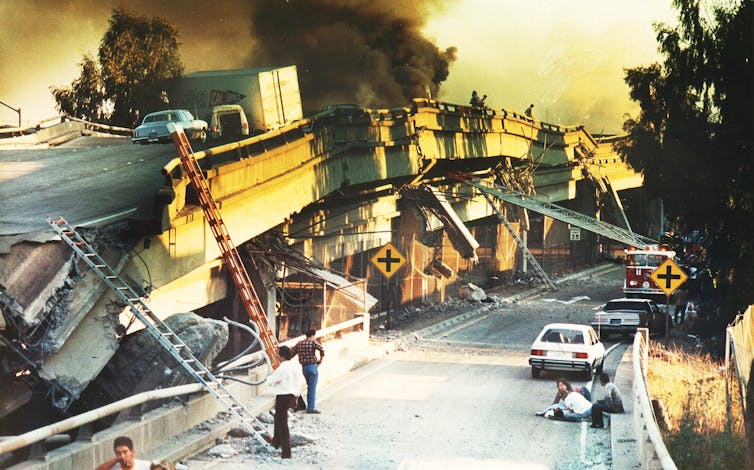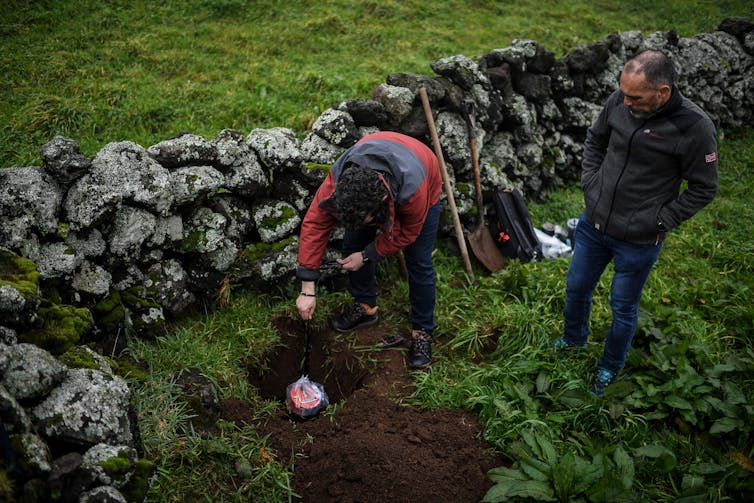
By Harold Tobin
Almost like aftershocks, questions about earthquake prediction tend to follow disasters like the one that occurred Sept. 8, 2023, in Morocco. Could advance notice have prevented some of the devastation? Unfortunately, useful predictions are still in the realm of science fiction.
University of Washington professor of seismology and geohazards Harold Tobin heads the Pacific Northwest Seismic Network. He explains the differences between predicting and forecasting earthquakes, as well as early warning systems that are currently in place in some areas.
Can scientists predict a particular earthquake?
In short, no. Science has not yet found a way to make actionable earthquake predictions. A useful prediction would specify a time, a place and a magnitude – and all of these would need to be fairly specific, with enough advance notice to be worthwhile.
For example, if I predict that California will have an earthquake in 2023, that would certainly come true, but it’s not useful because California has many small earthquakes every day. Or imagine I predict a magnitude 8 or greater earthquake will strike in the Pacific Northwest. That is almost certainly true but doesn’t specify when, so it’s not helpful new information.

Naeblys/iStock via Getty Images Plus
Earthquakes happen because the slow and steady motions of tectonic plates cause stresses to build up along faults in the Earth’s crust. Faults are not really lines, but planes extending down miles into the ground. Friction due to the enormous pressure from the weight of all the overlying rock holds these cracks together.
An earthquake starts in some small spot on the fault where the stress overcomes the friction. The two sides slip past each other, with the rupture spreading out at a mile or two per second. The grinding of the two sides against each other on the fault plane sends out waves of motion of the rock in every direction. Like the ripples in a pond after you drop in a stone, it’s those waves that make the ground shake and cause damage.
Most earthquakes strike without warning because the faults are stuck – locked up and stationary despite the strain of the moving plates around them, and therefore silent until that rupture begins. Seismologists have not yet found any reliable signal to measure before that initial break.
What about the likelihood of a quake in one area?
On the other hand, earthquake science today has come a long way in what I’ll call forecasting as opposed to prediction.
Seismologists can measure the movement of the plates with millimeter-scale precision using GPS technology and other means, and detect the places where stress is building up. Scientists know about the recorded history of past earthquakes and can even infer farther back in time using the methods of paleoseismology: the geologically preserved evidence of past quakes.
Putting all this information together allows us to recognize areas where conditions are ripe for a fault to break. These forecasts are expressed as the likelihood of an earthquake of a given size or greater in a region over a period of decades into the future. For example, the U.S. Geological Survey estimates the odds of a magnitude 6.7 or greater quake in the San Francisco Bay Area over the next 30 years is 72%.

Paul Miller/MediaNews Group/Oakland Tribune via Getty Images
Are there any hints a quake could be coming?
Only about 1 in 20 damaging earthquakes have foreshocks – smaller quakes that precede a larger one in the same place. By definition they aren’t foreshocks, though, until a bigger one follows. The inability to recognize whether an earthquake in isolation is a foreshock is a big part of why useful prediction still eludes us.
However, in the past decade or so, there have been a number of massive earthquakes of magnitude 8 or more, including the 2011 magnitude 9.0 Tohoku earthquake and tsunami in Japan and a 2014 magnitude 8.1 in Chile. Interestingly, a larger fraction of those very biggest earthquakes seem to have exhibited some precursory events, either in the form of a series of foreshocks detected by seismometers or sped-up movements of the nearby Earth’s crust detected by GPS stations, called “slow slip events” by earthquake scientists.
These observations suggest perhaps there really are precursory signals for at least some huge quakes. Maybe the sheer size of the ensuing quake made otherwise imperceptible changes in the region of the fault prior to the main event more detectable. We don’t know, because so few of these greater than magnitude 8 earthquakes happen. Scientists don’t have a lot of examples to go on that would let us test hypotheses with statistical methods.
In fact, while earthquake scientists all agree that we can’t predict quakes today, there are now essentially two camps: In one view, earthquakes are the result of complex cascades of tiny effects – a sensitive chain reaction of sorts that starts with the proverbial butterfly wing flapping deep within a fault – so they’re inherently unpredictable and will always remain so. On the other hand, some geophysicists believe we may one day unlock the key to prediction, if we can just find the right signals to measure and gain enough experience.
How do early warning systems work?
One real breakthrough today is that scientists have developed earthquake early warning systems like the USGS ShakeAlert now operating in California, Oregon and Washington state. These systems can send out an alert to residents’ mobile devices and to operators of critical machinery, including utilities, hospitals, trains and so on, providing warning of anywhere from a few seconds to more than a minute before shaking begins.

Patricia De Melo Moreira/AFP via Getty Images
This sounds like earthquake prediction, but it is not. Earthquake early warning relies on networks of seismometers that detect the very beginning of an earthquake on a fault and automatically calculate its location and magnitude before the damaging waves have spread very far. The sensing, calculating and data transfer all happen near the speed of light, while the seismic waves move more slowly. That time difference is what allows early warning.
For example, if an earthquake begins off the coast of Washington state beneath the ocean, coastal stations can detect it, and cities like Portland and Seattle could get tens of seconds of warning time. People may well get enough time to take a life safety action like “Drop, Cover and Hold On” – as long as they are sufficiently far away from the fault itself.
What complications would predicting bring?
While earthquake prediction has often been referred to as the “holy grail” of seismology, it actually would present some real dilemmas if ever developed.
First of all, earthquakes are so infrequent that any early methods will inevitably be of uncertain accuracy. In the face of that uncertainty, who will make the call to take a major action, such as evacuating an entire city or region? How long should people stay away if a quake doesn’t materialize? How many times before it’s a boy-who-cried-wolf situation and the public stops heeding the orders? How do officials balance the known risks from the chaos of mass evacuation against the risk from the shaking itself? The idea that prediction technology will emerge fully formed and reliable is a mirage.
It is often said in the field of seismology that earthquakes don’t kill people, buildings do. Scientists are already good enough today at forecasting earthquake hazards that the best course of action is to redouble efforts to construct or retrofit buildings, bridges and other infrastructure so they’re safe and resilient in the event of ground shaking in any area known to be at risk from large future quakes. These precautions will pay off in lives and property saved far more than a hoped-for means of earthquake prediction, at least for the foreseeable future.
![]()
Harold Tobin is Professor of Seismology and Geohazards at the University of Washington.




























Leave a Reply